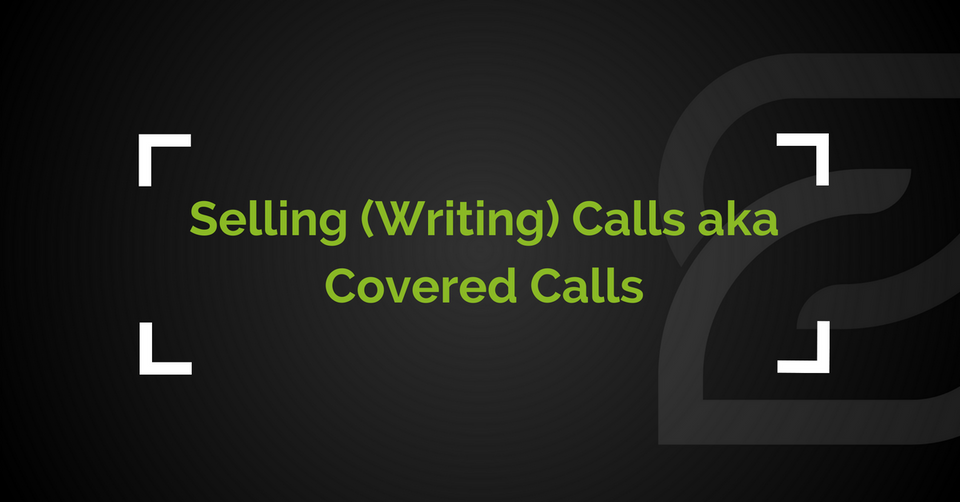Selling (Writing) Calls — Covered Calls

WHY: To earn income on shares you already own (hence ‘covered’ by you), while waiting for your desired sell (higher) price. You’re expecting the stock price to go down or stay flat, you sell a CALL option contract. This is the most conservative option strategy available, and is an income strategy for stocks you already own.
Writing (Selling) Covered Calls — How To Reduce Your Downside Risk: The additional income in the form of premiums you get from selling (writing) options allows you to act like your own fund, and pay distributions to yourself, that the underlying stocks don’t provide. The more uncertainty, the higher the option premiums tend to be, and that translates to richer distributions for investors.
For example, you have 100 shares at $50 (of a good, stable company) and expect it to go to $60 because you’re happy to sell at that price, you can write a covered call for a strike price of $60 (expiring couple of months from now).
In the process, you’ll collect a small premium $2 (per share), so basically you’re selling price is $60 + $2 premium per share. In other words, you’re selling your shares at the price you wanted to and received some extra cash for doing so.
If on the expiry, the closing price is below $60 — you’ll get to keep the premium as additional income and you can start writing a new call option. Rinse and repeat, month after month. Call it ATM cash if you will — it’s simple — write (sell) option, collect cash, lay back and wait, rinse and repeat for as long as you can (read below).
If however, on the expiry, the price is above $60, you are obligated to sell the shares at that price (don’t worry your broker will handle this part for you). If exercised by the market (or as we say assigned) — you will be able to sell for $60 and keep the $2 per share additionally.
“IF” — because there is always a possibility it may not be exercised — but in either case, you win! Not bad eh! Ok, you have capped your upside — but what’s better — a 100% guarantee of $10 or 50% guarantee of $20?
To summarize, if the strike price (stock price at which the option can be exercised) isn’t reached because the price declines, the option expires worthless, and your ‘homemade’ fund can pocket thousands of dollars in premiums by writing options on the same stocks. These premiums help offset the decline in your fund’s underlying portfolio, allowing your fund to outperform its equity index benchmark in weak markets.
Using Covered Calls To Hedge Against Down Markets: The covered call strategy also works best in a flat market, when you believe the stock is going to stagnate for a while but you don’t wish to sell soon. And because of greater uncertainty about the future stock price, there’s generally higher volatility, which factors into the price of the option premium — causing it to go higher. This is good if you want to generate cash flow or produce some income on a dormant position you already have.
Catch 22: Well, when you write a covered call (or sell a CALL option), you must be prepared to give up your shares at the strike price. Again 90% of options (expire worthless) are not exercised until expiration, but they can be exercised early, so be prepared for that at any moment. So that’s the downside… if the market price is much higher than the strike price, there’s a good chance someone might exercise the contract, forcing you to sell and making it easier for them to book a profit while the price is very high and you would not be able to benefit from the upside.
There are a list of stocks, which are ideal for setting up covered calls — that’s because owning them is good, they carry little risk and generally provide a good return.

Member discussion